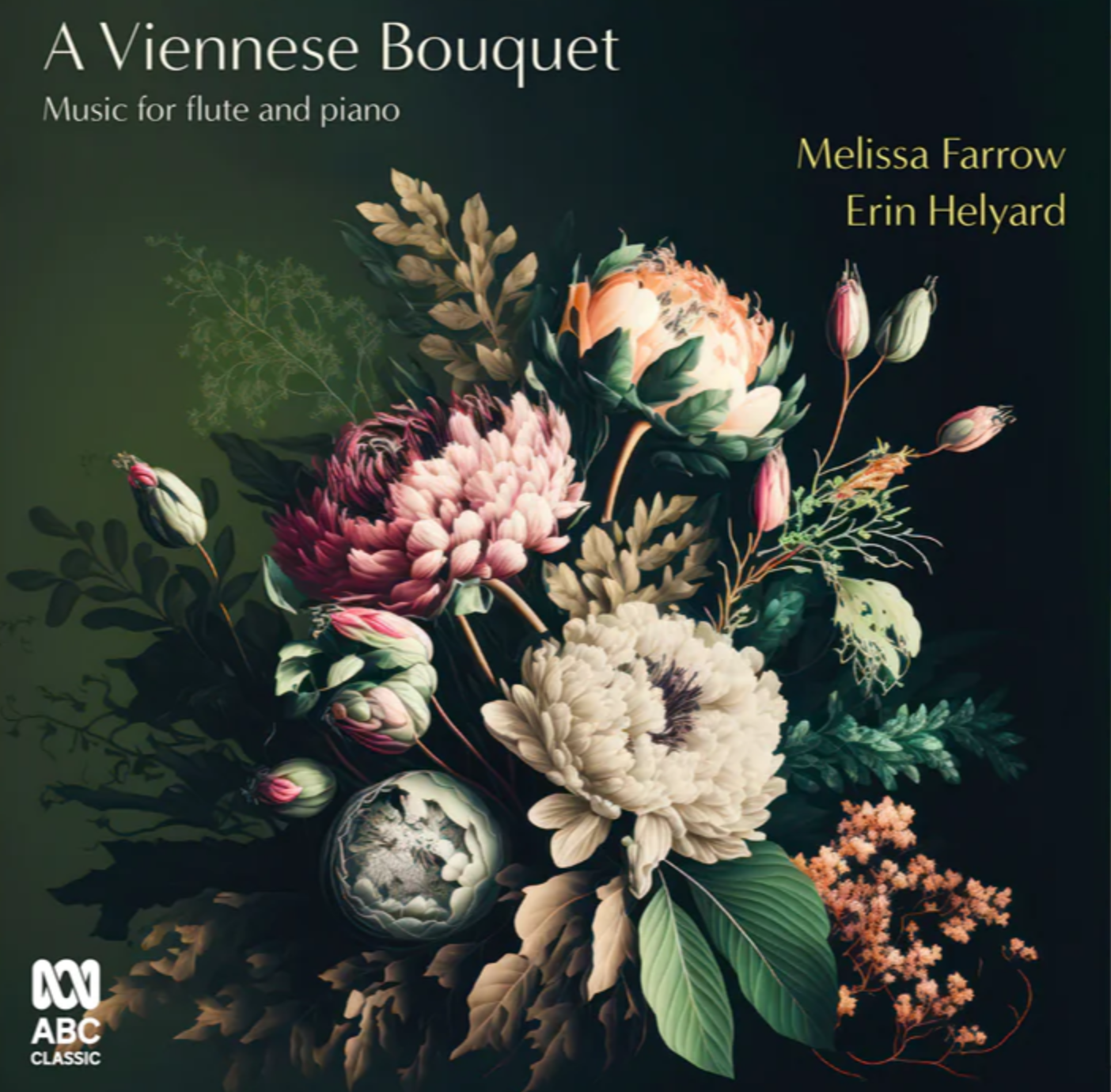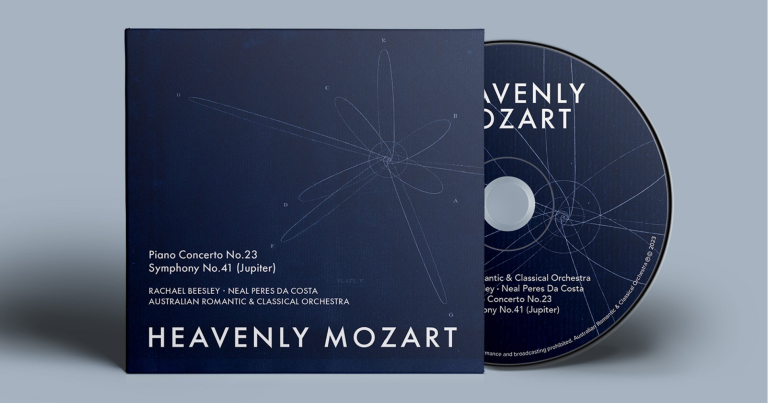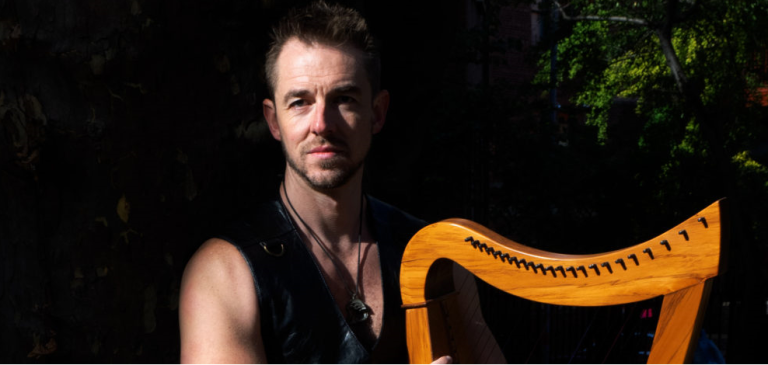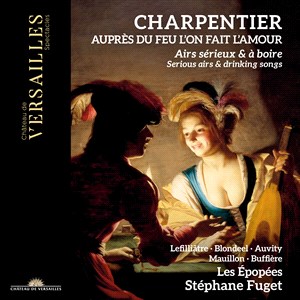Album Review: A Viennese Bouquet/ Farrow/ Helyard
A Viennese Bouquet
Melissa Farrow, flute/ Erin Helyard fortepiano
ABC Classic
Two of Australia’s foremost instrumental experts, flautist Melissa Farrow and keyboardist Erin Helyard have collaborated in a recording for ABC Classic, A Viennese Bouquet in which they explore some choice early 19th century repertoire for flute and keyboard.
Farrow plays a nine-key flute, a 2016 copy by Fridtjof Aurin in Düsseldorf, of a c.1830 instrument by Wilhelm Liebe, while Helyard is at the keyboard of a 2014 Belgian fortepiano made by Chris Maene, replicating an original by Walter and Sohn c.1800.
As equal partners, the duo celebrates the new-found possibilities of instrumental innovation of the time. Farrow’s impressive technical prowess has the flute at her bidding, showcasing its possibilities and timbres throughout its registers; Helyard thrills at the keyboard, reveling in the charmingly naïve sound of the fortepiano, liberated by the tonal freedom of equal temperament along with the shading offered by the judicious use of pedal effects. The contrasting abilities of the flute for long legato lines against the more short-lived sound of the fortepiano create effective contrasts and balance.
The opening track sets the stage for the flute with its solitary statement of the theme of Beethoven’s take on The Last Rose of Summer, Op. 105 No. 4. The a capella theme is whimsical with the keyboard entering at the first variation with a gently ornamented minuet. An interesting contrapuntal variation is introduced as the pair alternate melody and counter-melody, finally returning to a simple restatement of the theme and swelling to a grand coda at the end.
Although this anthology is seemingly for flute and keyboard, there are two pieces on the recording, which in fact elevate the fortepiano – the Sonata for pianoforte with obbligato flute Op. 29 by Anton Eberl and the Grand Sonata for piano and flute op.38 by August Eberhard Müller.
Eberl’s keyboard part is seriously virtuosic and Helyard does it ample justice. Although the flute has less to prove in the first movement. The second movement Andantino grazioso and third movement Intromezzo (Andante molto) Alla Polacca demand greater virtuosity from the flute and there are some sumptuous moments from the keyboard. Both instruments draw colour from subtle changes in tempo and crisp variations in attack, enriched with different approaches to tone and articulation.
The Grande Sonata in C Major, Op. 38 by Müller is a truly imposing statement, written for virtuoso performers. Flute and keyboard explore the registers, going head-to-head, sharing and contrasting thematic material. After a sighing introduction the fortepiano breaks into a more spirited exposition of the theme then taken up by the flute. The flute leaps registers and trills with ornaments. Helyard’s use of asynchronous chords fills out the tapestry. The second movement Larghetto melanconico takes us to the darker sides of the duo who throw off shards of chromatics in the final whirlwind Presto before the con fuoco closing bars.
It’s not all brightness and brilliance from the duo. The slow movement from Friedrich Kuhlau’s Variations on an ancient Swedish air from the Grand Sonata for piano and obbligato flute opus 83 no.1 is sombre in its mood. The most interesting aspect of this track is Helyard’s use of the knee levers of the fortepiano to achieve a pedal-like shimmering other-worldly effect.
A Viennese Bouquet pays homage to the women of the era, whose talents were inevitably hidden within the confines of the salon, with the inclusion of Leopoldine Blavahetka’s Introduction and Variations opus 39. After a declamatory opening, it blossoms into a bel canto-like set that is brimming with variety. Within its brief variations, there are delicate dance like-passages, trilling scales, a romping gallop and reaches into the extremes of the range with a dazzling coda.
Finally, the Rondo in E minor for flute and piano by Franz Xaver Wolfgang Mozart, the youngest of six children born to Wolfgang Amadeus and Constanze, and the younger of only two who survived into adulthood. It is a pleasing piece which represents the nexus between the Classical and Romantic traditions.
A Viennese Bouquet packs a great deal of punch into a collection of six pieces lasting over 76 minutes, which includes two substantial sonatas. Comprehensive liner notes set the context for the choices of early 19th century Viennese pieces, written for the salon as well as the concert hall, for amateurs and virtuosi. Additionally, some of the pieces are inspired by folk melodies and explore the theme and variations form. It is also music written by composers who understood both instruments and who used their insights to capitalise on and develop the capabilities and complementarity of both flute and keyboard.
Shamistha de Soysa for SoundsLikeSydney©








bllf1e
7ou36i
nsracl
q45vsx
4zek4m
c4v26w
qx73ti
1gryfe
9xxosl
g1so36
0jiojo
t0dlhb
94ltwv
27cka2